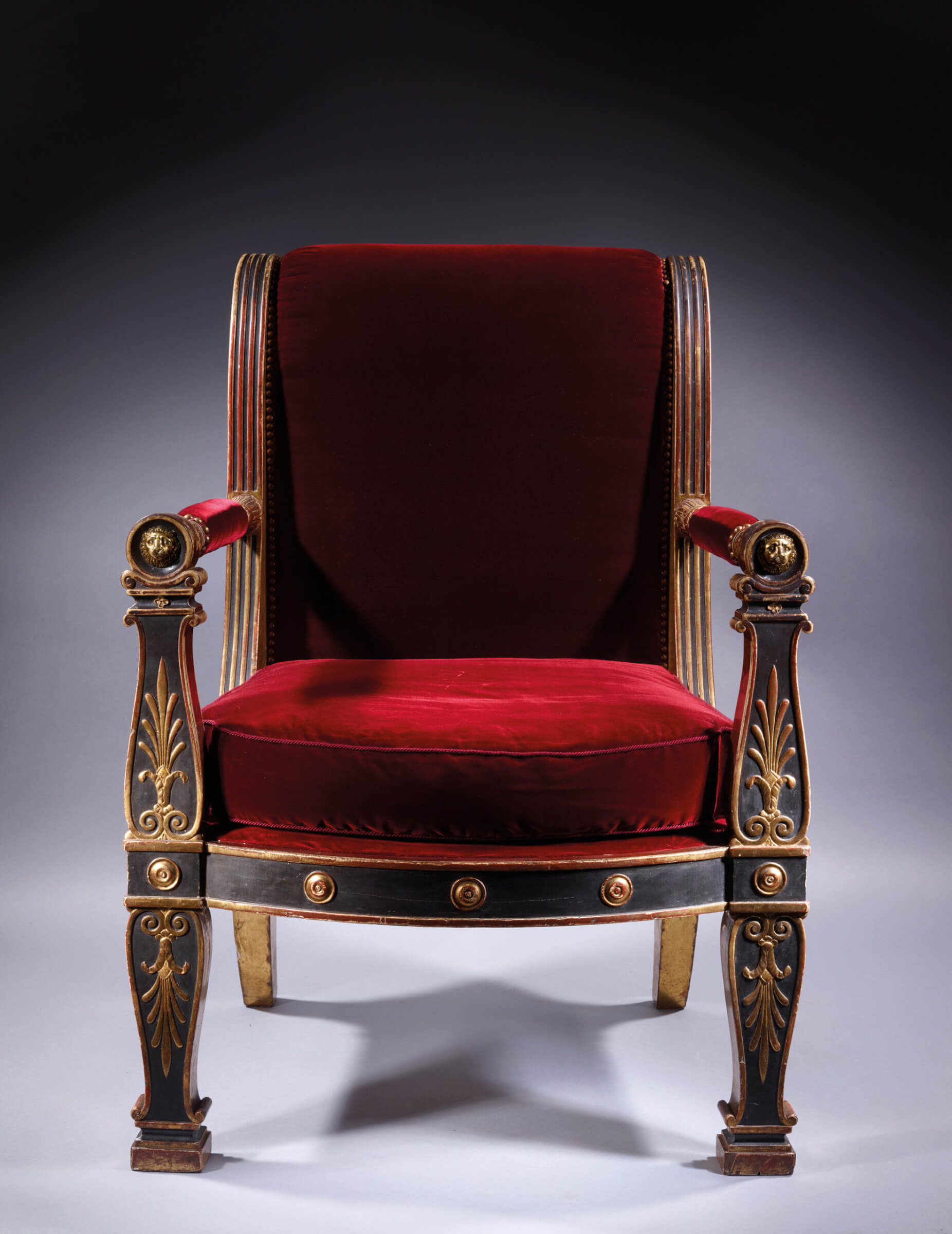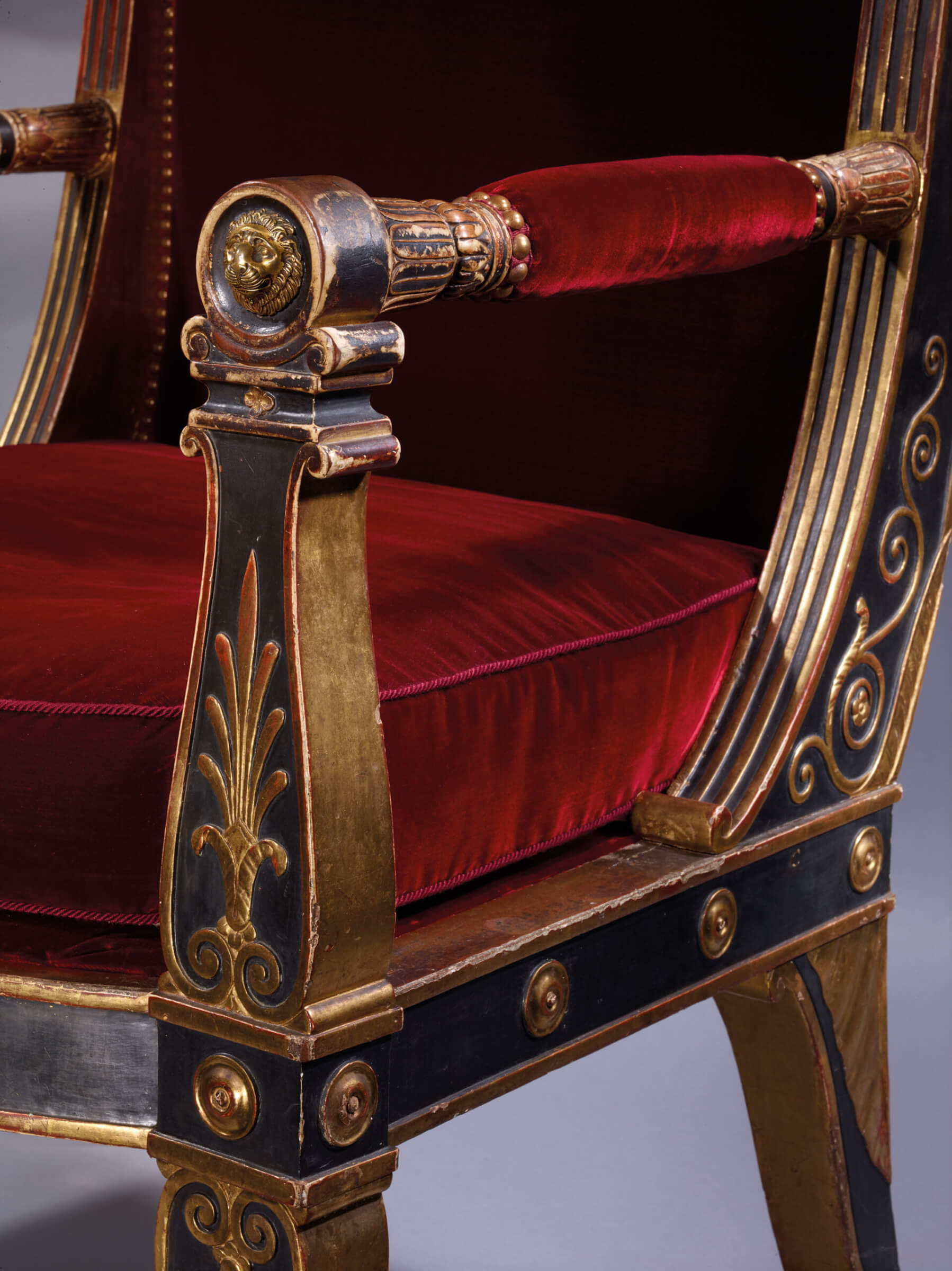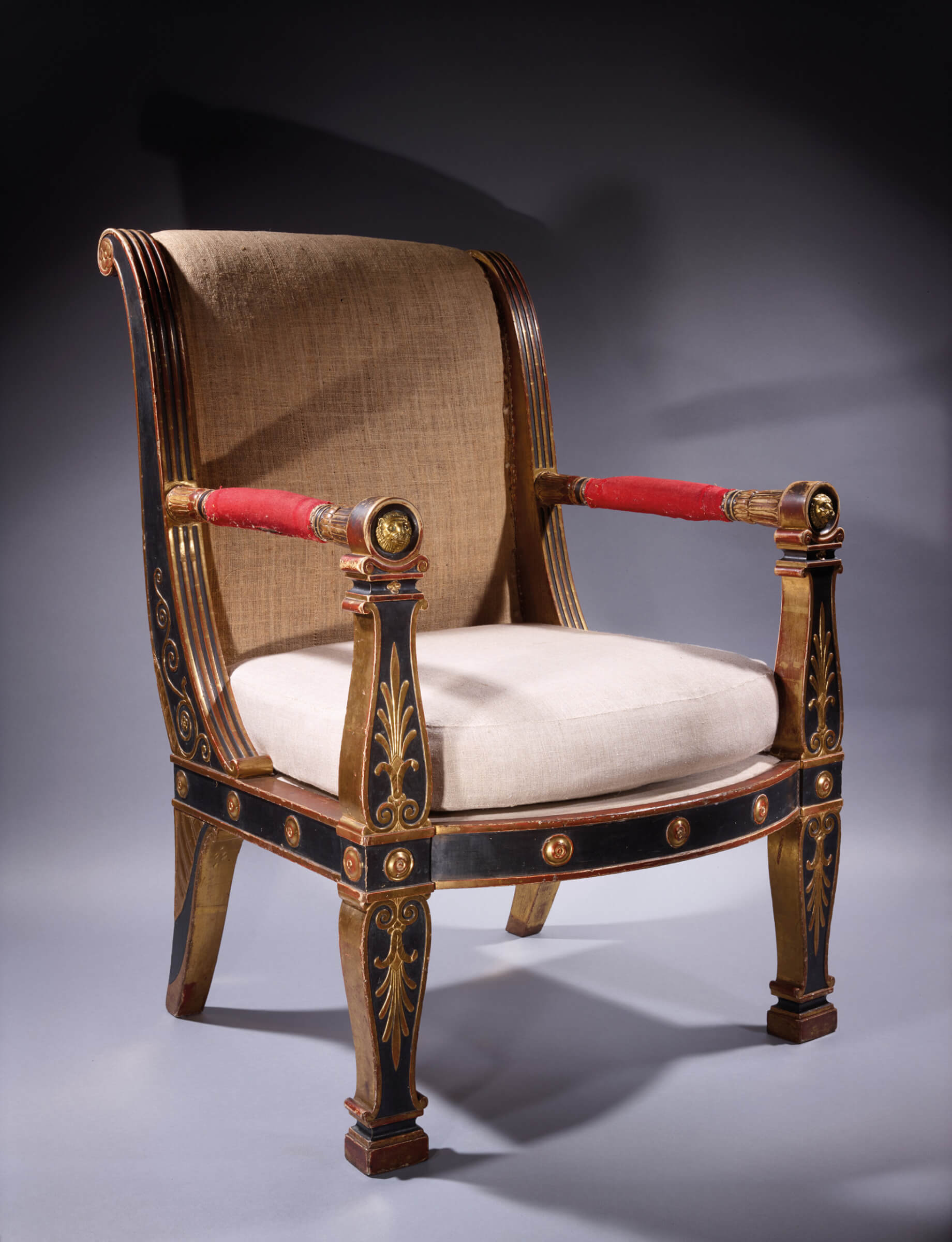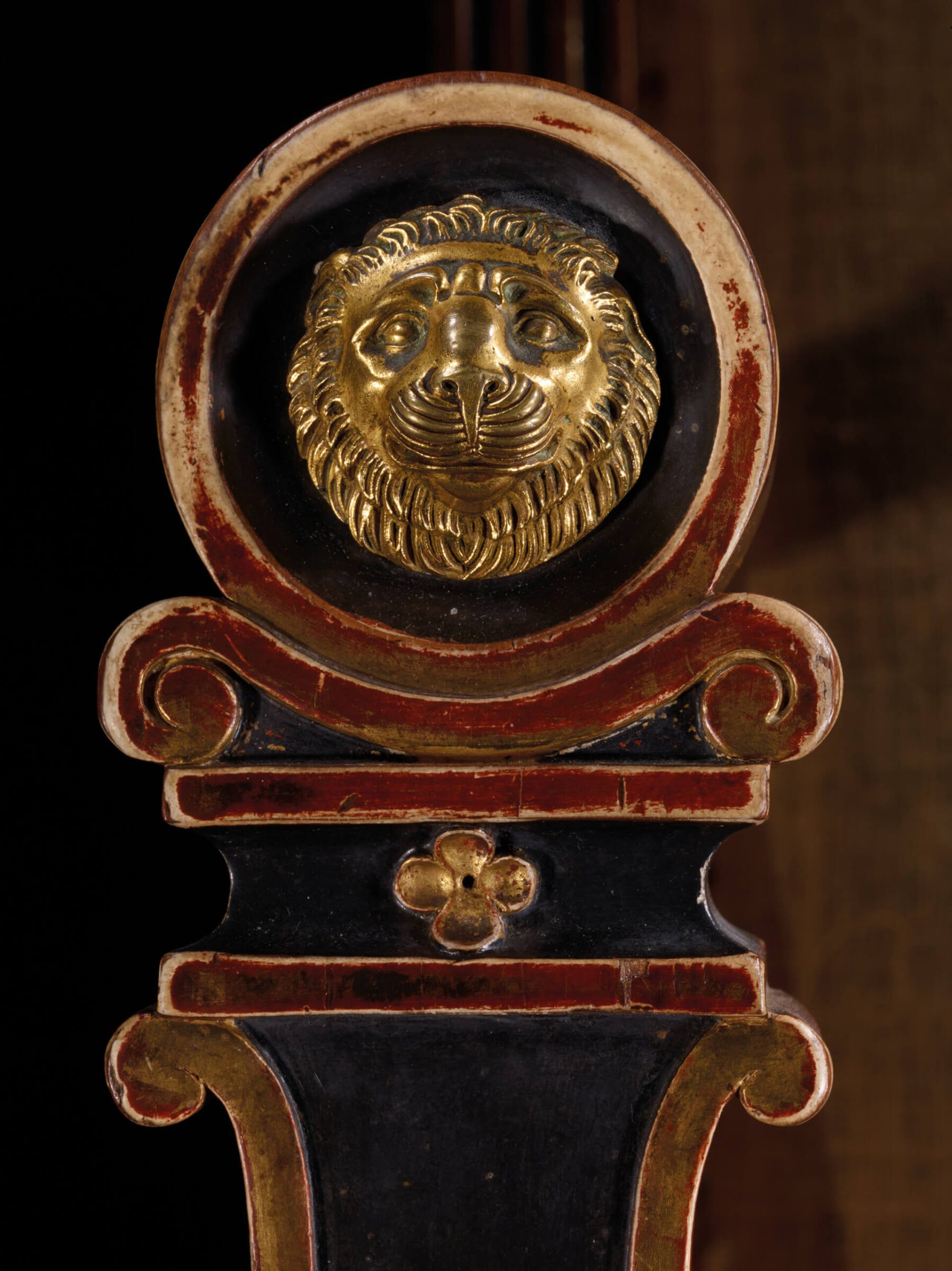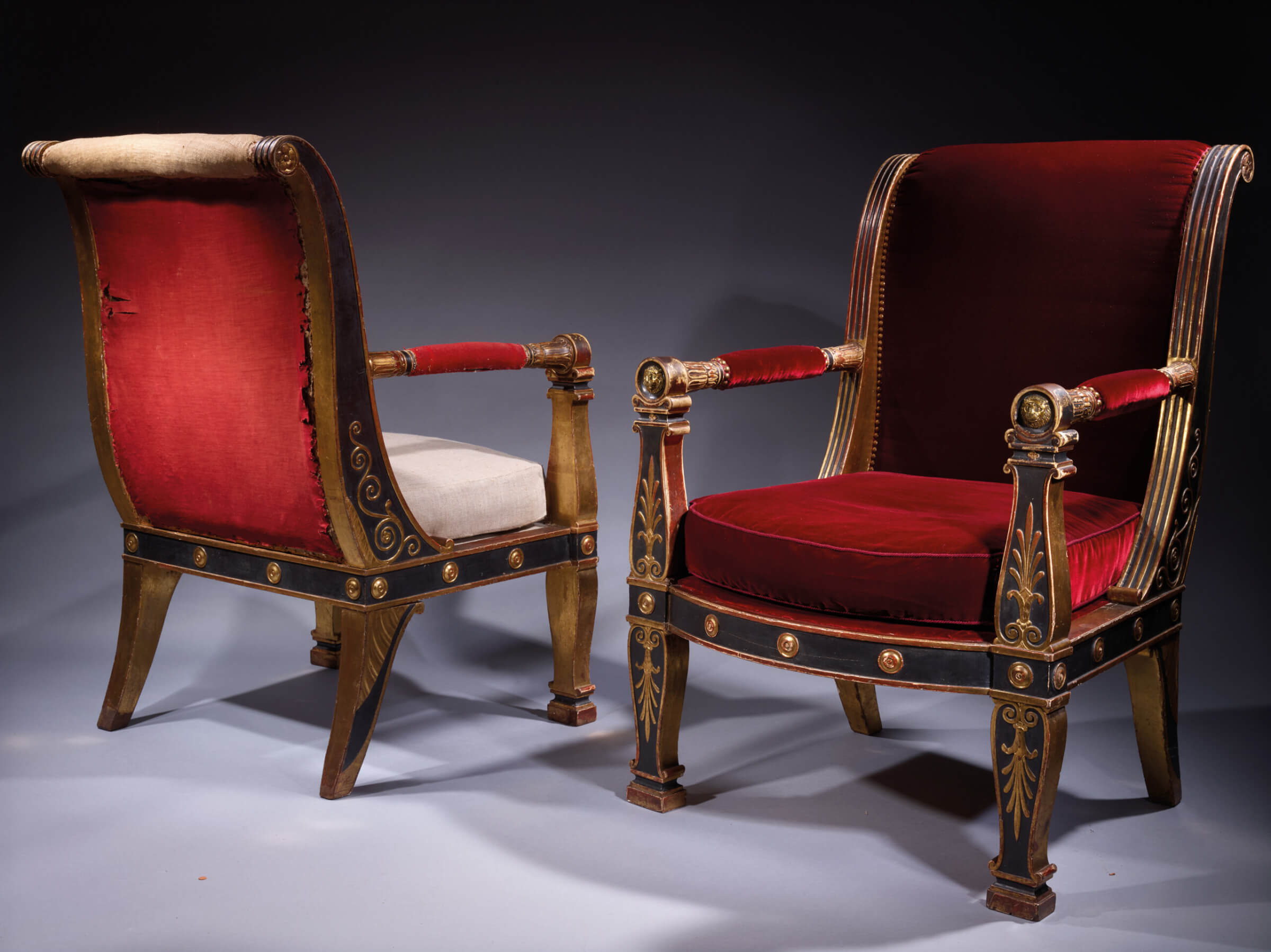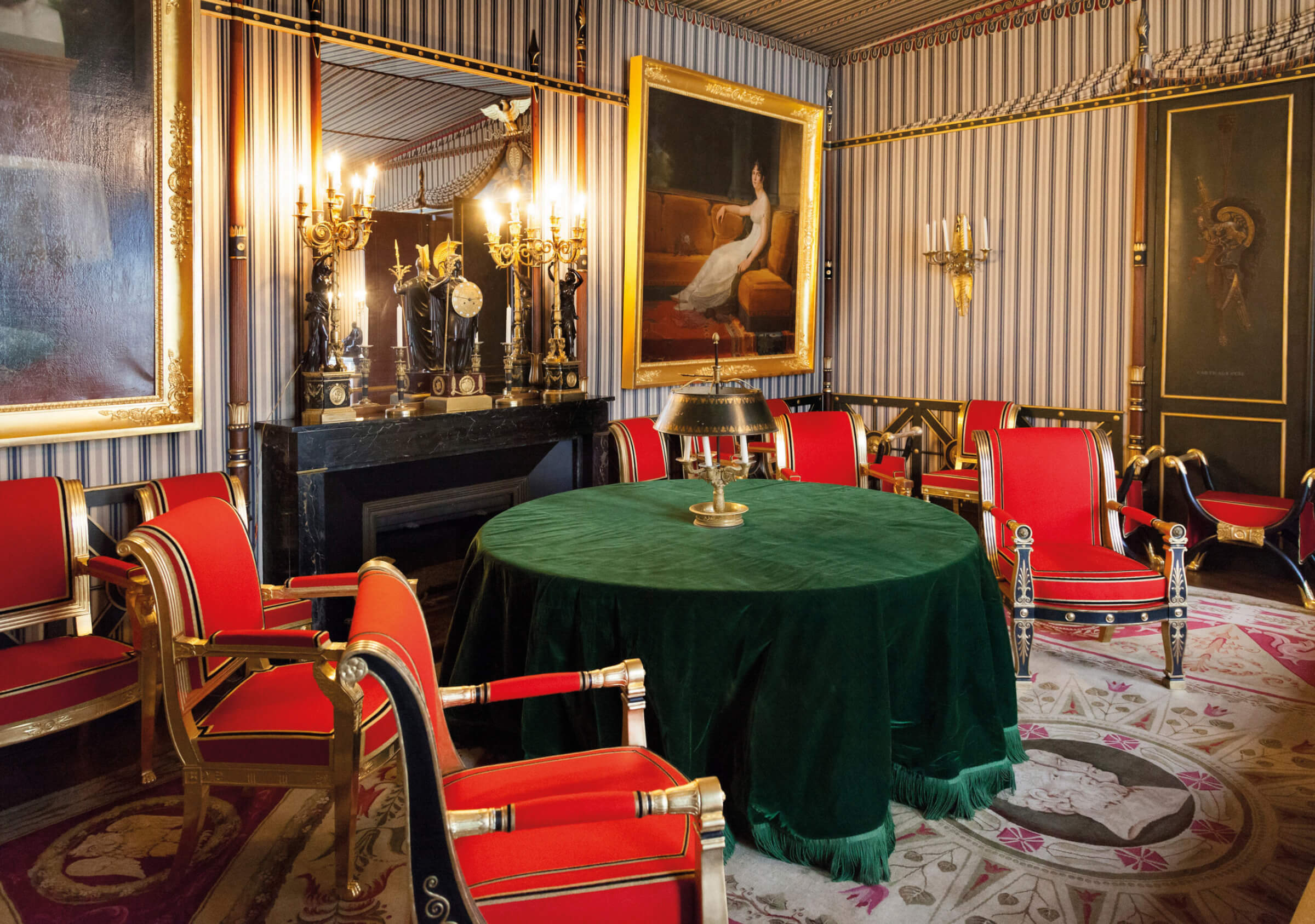

Painted and gilded wood; chiselled and gilded bronze; retaining a large and poignant part of its original red cloth upholstery.
H. 97.5 cm. (38 ½ in.); W. 68.5 cm. (27 in.); D. 58 cm. (23 in.).
PROVENANCE: delivered in 1800 by Jacob-Frères to be placed in the Council Room of Napoleon Bonaparte, First Consul, at the Château of Malmaison (Hauts-de-Seine, Île-de-France region), which, together with the Tuileries Palace in Paris, was the seat of the French government from 1800 to the autumn of 1802.
LITERATURE: Percier et Fontaine, Recueil de décorations intérieures, 1801 (first complete edition in 1812), Paris, L’Aventurine (republished), commentary on pl. LV; Johann David Passavant (author) and Johann Nepomuk Muxel (engraver), The Leuchtenberg Gallery. A Collection of Pictures Forming the Celebrated Gallery of His Imperial Highness, the Duke of Leuchtenberg, at Munich, London, 1852, p. 39 and pl. 262; Bernard Chevallier, “Malmaison, château et domaine des origines à 1904”, Notes et documents, Paris, 1989, p. 91-93, 158-160, and p. 440, fig. 242 and 243; Amaury Lefébure, Société des Amis de Malmaison, Bulletin 2009, n° 44, p. 47-48.
STATE OF CONSERVATION: these historically important seats are all the more so since they are presented in their unaltered state. Their ‘antique bronze’ coloured lacquer and gilding are in museum condition. They have retained their original canvases and straps, and, quite extraordinarily, one of the two armchairs still has, on its armrests and back, the original red cloth commissioned by Bonaparte I Consul, as well as traces revealing the place of the original black and gold braiding.
As early as July 1800, a year after Joséphine (1763-1814), born Marie Josèphe Rose Tascher de La Pagerie, wife of Napoleon Bonaparte and future Empress, bought the Château of Malmaison, the First Consul ordered that a Council Room should be fitted out so that he might convene his ministers there on a regular basis. The room was furnished with a number of seats in the antique taste, which were delivered by Jacob-Frères, all of them painted black and gold and upholstered in red cloth enhanced with a black and gold velvet braid.
The Jacobs are one of the most famous of the Parisian cabinet-making families, who, for over three generations, from the last third of the 18th century until the end of the first half of the 19th century, succeeded in keeping the reputation of their firm at the highest standard. Georges Jacob, the father of the dynasty, was awarded the title of master in 1765. From 1773 until the Revolution, Georges Jacob kept working for the Garde-Meuble to the Crown, supplying the main royal residences. From 1781, he held various positions in his guild of cabinetmakers. In 1788, he became head-assistant and was elected head of the guild on the following year. Under the First Empire, Jacob-Desmalter became a joiner, cabinetmaker and manufacturer of furniture and bronzes for L.L.M.M.I.I. and R.R. (Their Imperial and Royal Majesties), the Emperor and Empress also being King and Queen of Italy since 1805. During the entire reign of Napoleon I, he was the main supplier of the Mobilier Impérial, far outstripping all his contemporaries.
Ill. 1 – Present view of the Council Room of Napoleon Bonaparte, First Consul, at the château of Malmaison.
